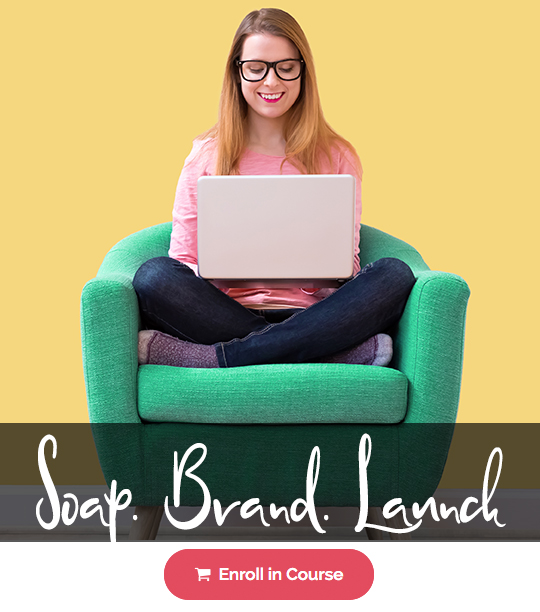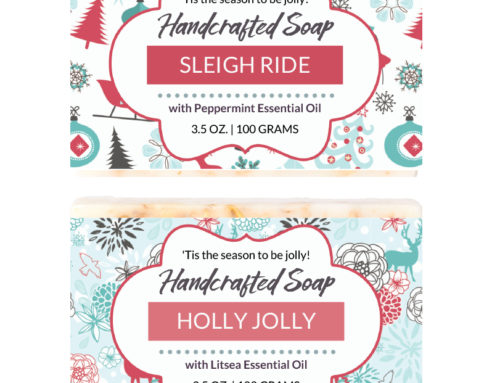The following is an excerpt from Module 14, Lesson 05 of Soap. Brand. Launch.; the leading business eCourse for the Soap and Skin Care Crafter. The course is included in our Business Membership! To get more lessons like this, sign up!)
In many ways, marketing and communicating are the same thing. And marketing is now a 2-way communication, thanks to the new participation economy. How to create a platform that allows for back-and-forth between your company and your customer? Social media. Social media is one of the best ways to market and engage with your ideal customer.
Ideally, you should eventually create a presence on all major social media outlets, including but not limited to Facebook, Pinterest, Twitter, Instagram and YouTube. Even if you don’t yet have a marketing plan for these platforms, you should still establish your company name by creating an account for each, as you want to at least solidify your company name and likeness so you will have them when you are ready.
But… Social Media IS NOT for Selling!
Gone are the days when you could post a beautifully shot photo of your best-selling facial bar with a link to the product page and make a sale. If it were still that easy, I wouldn’t need to write a marketing lesson into this program.
This is where many folks in the handcrafted industry get frustrated. They are still using the old model of social media marketing, which admittedly isn’t that old, but still outdated. Posting links with a few fun remarks or product photos used to work because there was comparatively much less noise and even less content. People were ready to click on everything that came across their news feed. But nowadays, every social media platform is overflowing with content. This has made people very choosy.
Social media is still an incredible platform for marketing, but you must wield your efforts in a more nuanced and thoughtful manner.
Success through social media will only come via authenticity and personalization.
Today, social media is more about strengthening your relationships with your followers by engaging them in conversation. The whole idea is to give them a reason to follow you and respond back to you. Simply pushing marketing messages is not going to help.
There has been a plunge in “organic” reach.
Though you may not be familiar with the term, “organic reach,” I’m sure you’ve experienced its decline if you’ve been using a social media business page platform. Organic reach is the number of people who have seen your post through unpaid distribution (i.e. posting a beautifully shot photo of your best-selling facial bar with a link to the product page).
It is a well-known fact that organic reach on social media has drastically fallen over the past few years. Businesses are finding it hard to drive traffic to their websites through social media. The reason is simple. The more the content on social media, more will be the fall in organic reach…it is merely a numbers game.
Content Is King
Because of the drastic decline in organic reach, the only way to effectively engage people through social media is to improve the quality of your content. For instance, if each of your posts engages more people, social media algorithms will consider it interesting and then enhance its reachability among more people.
The ultimate marketing goal of your business is more traffic, conversions and leads, which nowadays is only possible through high-quality content.
In his best-selling book, Jab, Jab, Jab, Right Hook, Gary Vaynerchuck explains his marketing philosophy—the jab, jab, jab, right hook method—where jabs are the value you provide your customers (the content you put out, the good things you do to convey your appreciation, etc.), and the right hook is the ask: it’s when you go in for the sale.
Another way to look at this philosophy is a very simple and profound avowal – to get you must give.
Thus, not all of your content posted to social media should be sales content. In fact, many experts suggest that only 20% of your content should be the right hook, the asking for a sale. The 80%? Jabs.
Engaging Content Ideas
Don’t overthink the content you intend to create that drives more engagement and interaction. It is simpler than you may realize. But please keep in mind, though the following ideas are easy, they aren’t one-offs. You must continually pepper your audience with these actions and more as frequently as possible. These ideas won’t work if you don’t work them.
Let’s look at some easy social media actions you can take that create customer engagement:
- Post quotes. People love to read inspirational or funny quotes. Try to make your quotes relative to your business, but they don’t have to be every time. Relative quotes for a soap making business would be quotes on beauty, self-care, health, cleanliness…etc. That said, post a quote that is consistent with your brand. If your brand is daring, post a daring quote. If your brand is comical, post your favorite Dave Chapelle quote. If your brand evokes a sense of adventure, post a travel quote.
- Post behind-the-scenes photos. People absolutely love to get a sneak peak of how you create your products. We must always remember how little our customers know about soap and skin care products and even less about how they are made. Posting behind-the-scenes photos on social media was one of my most engaging, interactive marketing actions, and it was very simple. Keep in mind, you can “batch” your photo content for posting. You don’t always have to post pictures of what you are doing that very moment. I always kept my camera or phone handy, and myself and my staff would recurrently take photos of the manufacturing process throughout the week. All photos would be collected in a folder and then systematically posted, whether they were occurring in the moment or not.
- Post product shots. But not just your standardized product photos…at least not all the time. Be creative. Post your product being used by yourself, an employee or re-post a product shot from a customer who submitted their photo on one of your feeds.
- Post questions. Post thought-provoking or fun questions to encourage engagement. Even just simple questions such as, “Does anyone have fun plans for the holiday weekend?” Or, maybe your company donates to charitable causes. You could briefly showcase your charitable contribution and then ask your customers who their favorite charities are and why. This also opens the door to knowing your customers better.
- Poll your audience. You can ask what their favorite product is or what they would like to see in the future. Facebook has made it very easy to poll, and it is very easy and accommodating for your audience to engage in. I recommend polling quite a bit, but not always for the sole purpose of collecting serious data. Sprinkle in thought-provoking polls, more serious product-preference polls, as well as lighthearted polls.
- Ask for product input. Are you creating a new product? Ask your customers what you should name it or what scent it should be. The craft beer industry has done an absolutely exceptional job of engaging customers in this way. Craft beer snobs (yours truly) love to be a part of the actual decision-making process of a brewery because of the authenticity that small-scale brewers are yearning for. The handcrafted soap and skin care industry is much the same. Asking for product input—even if some of the input is completely useless—is a really, really great way to engage.
- Post links to relatable blog content. I don’t recommend doing this all the time, as by posting interesting information from a blog that is not your own obviously drives the audience away from your online presence. That said, if the information is relative to your company, doing this builds authenticity in your brand and makes your message seem that much more genuine. For example, if part of your company’s message is being eco-friendly and reducing waste, posting a link that showcases the massive trash islands in the Pacific Ocean will not only inform your customer, it will show them you care deeply about your message. Or, it could be as simple as posting a link such as, “Top 10 Benefits of Lavender Essential Oil.”
- Post reviews or testimonials. Share customer reviews or testimonials with your audience.
- Feature a team member. People love to know who creates their products or helps in the business. Feature an employee so people can get to know your team.
- Post a super customer. With their permission, post a picture of one of your best customers. You could even run a contest to see who has the best selfie that includes one of your products accompanying them. People want to be included, so include them. You could even develop a “customer of the month,” with a quick write-up as to how and why they became an ambassador to your brand.
- Be real. Occasionally (maybe once a week) share something personal. Share a picture from your birthday party, a review of the restaurant you ate at last night, a picture of your new baby…etc. Be real but proceed with caution and don’t overdo it. Never post anything controversial, such as politics or religion (unless it is part of your message and you feel compelled to do so). People love to know that the person they are buying from is human and relatable. Don’t be afraid to get a little personal every now and then. I once heard a keynote speaker at a conference mention posting engaging, content-rich information Monday through Saturday and then posting personal/family/free-time material on Sundays.






This article is a goldmine of free tips for social media marketing! I’m always looking for ways to improve my online presence. The tip about creating engaging content is spot-on. Any specific content ideas you’ve found to be particularly successful?
Hi
These are very interesting and,I think, important points about engaging via social media. You’re so right, it’s complicated these days and it does sometimes feel like the market (all markets, really, not just soap making, but all “natural” products and other hand-crafted products,too) is glutted and people are overwhelmed with so many choices and options. Your suggestions should help to make a difference if applied as you have outlined… thank you!
That was a great and comprehensive article…all the tips enumerated and explained will be helpful for those who are wise enough to tap from it. Any business nowadays without social media signals and presence may not make it to the outermost, and investment too is part of the key to success in business. Keep up the good work.
It’s very informative tips for the social media marketing.